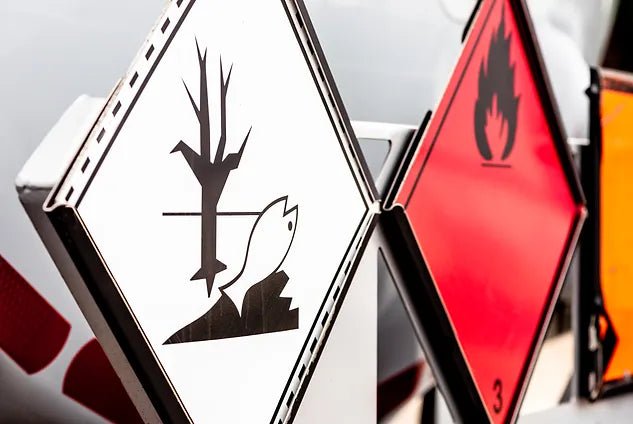The equipment required to be carried on a vehicle to comply with current ADR regulations varies, depending on the type of dangerous goods being transported.
But here is a list of the most common items required by all vehicles carrying dangerous goods in the UK, irrespective of size:
Fire extinguishers:
At least one fire extinguisher is required for each vehicle, with the size, number and type of extinguisher depending on the class of dangerous goods being transported.
Portable lamp/torch:
A pocket lamp (normally a torch) is to be carried for each member of the crew. It must be appropriate for the load, so for example would be ATEX rated if used in a flammable atmosphere.
Wheel chocks:
At least one wheel chock is required for each vehicle, to prevent the vehicle from rolling away in the event of an emergency.
Warning triangles:
Two self-standing warning triangles are required, to be placed at the front and rear of the vehicle in the event of a breakdown or an accident.
Eyewash:
Eye rinsing liquid is required for transporting certain classes of dangerous goods, such as fuel. The liquid must be in date and a container that is easy to open and use.
Personal protective equipment (PPE):
The type of PPE required will vary depending on the class of dangerous goods being transported, but it may include items such as gloves, goggles, and a face mask.
In addition to the above items, there may be other equipment that is required depending on the specific circumstances of the transportation. For example, if the vehicle is transporting radioactive materials, it may be required to carry a radiation detector.
Need some advice? Click here for DGSA services with N90 Consultants
If you are unsure what should be carried, speak to your DGSA advisor or check the latest ADR regulations for advice.
ADR regulations are constantly being updated, so it is important to check the latest requirements before transporting dangerous goods.


